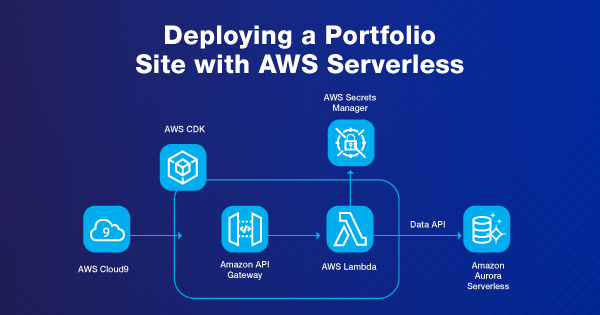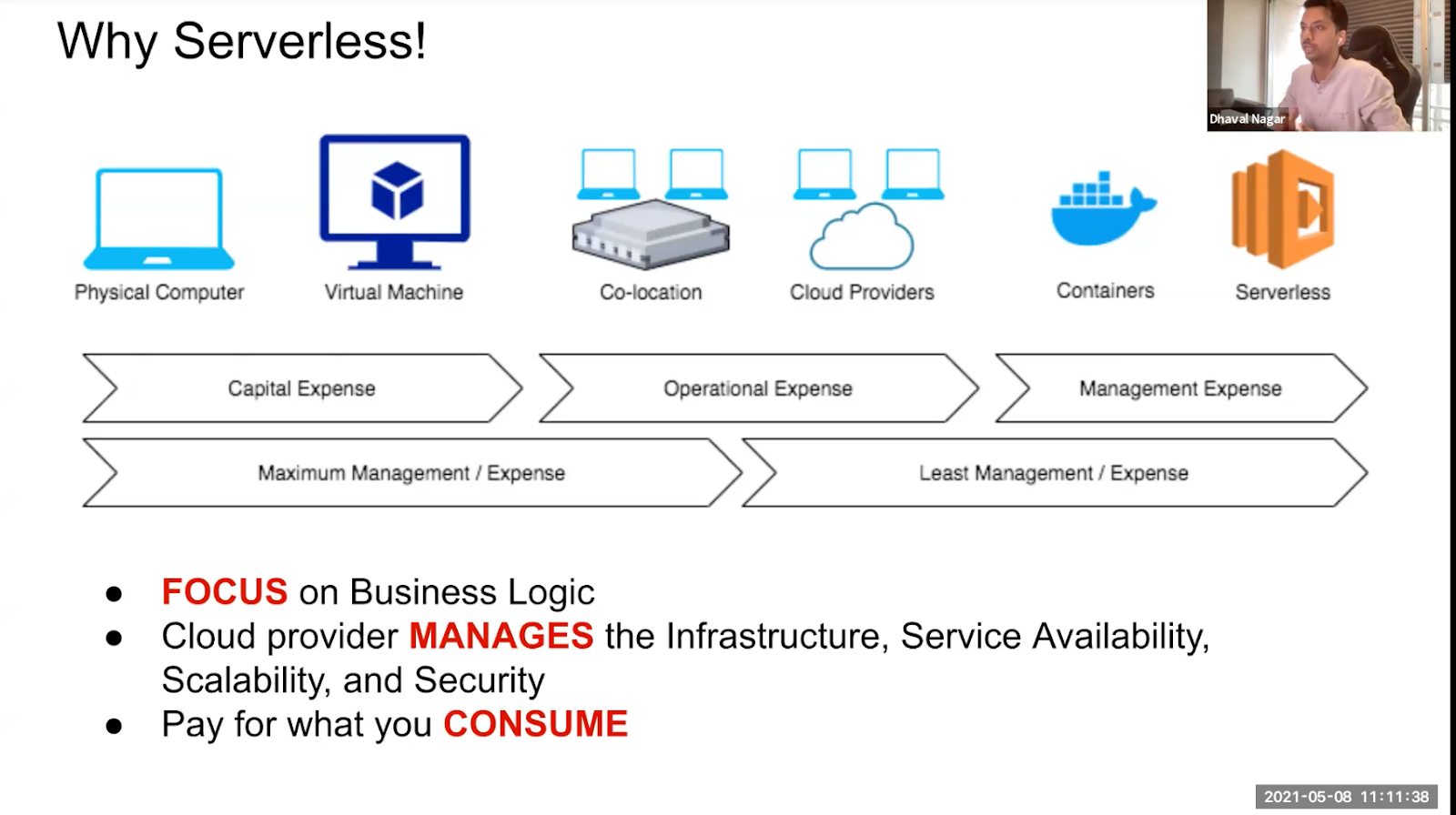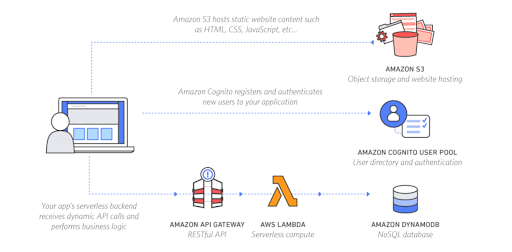AWS Serverless
The fact that a model can allow you to build and run applications and services without having to worry about its infrastructure and server is something that has caught the eye of every software developer. It is turning into something inevitable. This inevitableness was recognized by Whizlabs and we decided to do something to spread the knowledge by making it simpler.
“Point of serverless is that you do not need to focus a lot on servers, we as software developers or solution architects do not want to spend a lot of time on figuring out server networking. Our whole focus is on business usage.” – Dhaval Nagar, AWS Serverless Hero and Founder of AppGambit (Whizlabs free webinar on how to deploy a portfolio site with AWS Serverless).
Instead of focusing on responsibilities like operating system (OS) access management, OS patching, provisioning, right-sizing, scaling, and availability, you can concentrate on your core product and business logic. When you create your app on a serverless framework, the platform takes care of all of these tasks for you.
On the 8th of May, Whizlabs hosted a webinar on how to deploy a portfolio site using AWS Serverless. Dhaval Nagar, the featured speaker, began by introducing the topic and emphasizing why he believes serverless use is a must-know and how it will be widely used in the future.
WHAT IS AWS SERVERLESS?
You can develop and run applications and services using the serverless computing model without having to worry about infrastructure or servers. Host provisioning, patching, operating system maintenance, scaling, and power provisioning are all functions that are eliminated.
AWS Serverless services are:
1. Compute: This service enables you to execute your environment into the application
You may use AWS Lambda to run code as a feature that is caused by a variety of events, such as HTTP requests on AWS API Gateway, file changes on S3, or metric alarms in AWS Cloudwatch. AWS’s Lambda service allows you to run code for any kind of application or backend service.
You can run docker containers on AWS Fargate without having to handle servers or clusters. It’s a container orchestration solution that makes containerized applications simple to deploy, manage, and scale. To scale the instances, you don’t need to define EC2 instance types, manage cluster scheduling, maximize server usage, or define cloud watch metrics.
2. Messaging: It gives you the power to decouple microservices and systems
Amazon Simple Queue Service (SQS) is a completely managed distributed message queueing service. It allows you to decouple and scale microservices distributed systems as well as serverless applications. To resolve issues caused by the producer-consumer problem, you can send, receive, and cache messages between software components.
3. Integration: Responsible for creating, publishing and maintaining the APIs
You can orchestrate the components of your application as a series of steps with AWS Phase Functions to construct complex serverless workflows using Lambda functions. The workflow is represented as a state machine diagram, with each state representing an application variable.
4. Security
Amazon Cognito is a completely managed, flexible, and cost-effective sign-up/sign-in service for web and mobile applications that offers user authentication and management. User pools and identity pools are the two key components of Amazon Cognito. Amazon Cognito is a user authentication and management service for web and mobile applications that is fully managed, scalable, and cost-effective. The main two components of Amazon Cognito are identity and user pools. Your approved user or anonymous guest can swap user pool tokens for temporary AWS credentials to access AWS services using an identity pool.
5. Monitoring
AWS is an acronym for Amazon Web Services. CloudWatch is an AWS resource and custom device monitoring and management tool. CloudWatch collects metrics and logs from all of your AWS tools, apps, and facilities, both on AWS and on-premises. It provides real-time monitoring and insight into the resource usage of your EC2 instances, the efficiency of your applications, and the overall health of your company.
6. Database
Amazon DynamoDB is a NoSQL database service that supports key-value pairs and document data structures. You don’t have to think about hardware provisioning, setup and configuration, replication, backups, software patching, or cluster scaling because it’s a completely managed service. It has high availability and longevity, as well as automatic and unlimited read-write I/O scaling.
WHY AWS SERVERLESS?
With the shift to microservices-based architectures, it’s more necessary than ever to break down monolithic applications and decouple dependencies. It’s important to understand the mechanisms that allow asynchronous messaging and integration when designing event-driven architectures, whether you’re looking for simple queuing and message buffering or a more complex event-based choreography pattern.
AWS serverless is the future because there is no server management, it provides flexible scaling, high availability and zero idle capacity. Using AWS to create serverless applications frees you from the obligations and restrictions that servers impose. You can build faster and concentrate your development efforts on what makes your app unique by using AWS Lambda as your serverless logic layer.
Download the slides from here!
DEPLOYING A PORTFOLIO SITE THROUGH AWS SERVERLESS
Several AWS resources can be combined to create a serverless web application. Each service is completely managed, so you won’t have to worry about provisioning or managing servers. All you have to do now is link them and upload your application code to AWS Lambda, which is a serverless computer service.
Do you know The 10 Things Serverless Architects Should Know?
To get hands-on experience on deploying and creating a portfolio scratch from the beginning, you may watch our intense webinar on the very topic. An intense discussion about Proxy Integration, Authentication, Orchestration and Analytics was provided by AWS Serverless Hero, Dhaval Nagar.
To learn more about, watch the recorded webinar here:
Have you checked out 40+ Best Performing Free Tests from Whizlabs?
- Top 20 Questions To Prepare For Certified Kubernetes Administrator Exam - August 16, 2024
- 10 AWS Services to Master for the AWS Developer Associate Exam - August 14, 2024
- Exam Tips for AWS Machine Learning Specialty Certification - August 7, 2024
- Best 15+ AWS Developer Associate hands-on labs in 2024 - July 24, 2024
- Containers vs Virtual Machines: Differences You Should Know - June 24, 2024
- Databricks Launched World’s Most Capable Large Language Model (LLM) - April 26, 2024
- What are the storage options available in Microsoft Azure? - March 14, 2024
- User’s Guide to Getting Started with Google Kubernetes Engine - March 1, 2024



